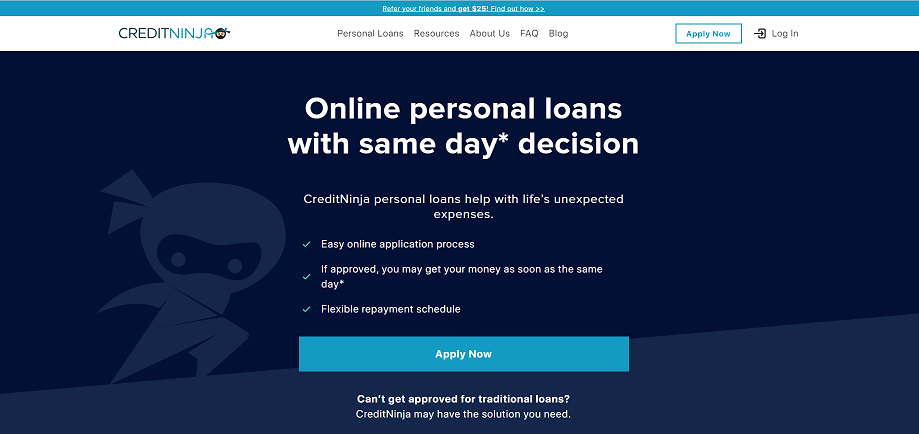⚡Quick Answer
To fund an eCommerce business, we’ve gathered 5 important options:
- Bootstrapping: Use personal savings to start your eCommerce business, maintaining full control and avoiding debt.
- Business Loans: Secure loans from banks to finance growth initiatives like inventory or marketing for your eCommerce operation.
- Online Lenders: Obtain fast funding with flexible terms from digital platforms, well-suited for urgent eCommerce needs.
- Crowdfunding: Gather small amounts of money from many people online to support your eCommerce idea.
- Venture Capital and Angel Investors: Get significant funds and expert advice from investors interested in the potential growth of your eCommerce business.
Financing an eCommerce business effectively involves exploring different funding options to accommodate the unique needs of online operations.
Each financing option has its pros and cons, and the right choice depends on your business’s specific needs, financial health, and long-term business goals. It’s crucial to thoroughly research and consider each option before deciding which option is best for your eCommerce business.
Here’s an overview of some common ways to fund your eCommerce business:
1. Bootstrapping
This involves using your personal savings to fund your business. It’s a good option if you want to maintain full control without the need for external investors.
👍 Advantages
- Full Control and Ownership: When you bootstrap, you retain complete control over all business decisions, including product development, marketing strategies, and budget management. You won’t have to answer to investors or board members, giving you the freedom to experiment and pivot your business model as needed.
- Avoiding Debt and Equity Dilution: Since you are not borrowing money or giving away equity, you avoid debt repayments and interest, which can be crucial for maintaining cash flow in the early stages. Also, since you are not diluting equity, any profits made will be entirely yours.
- Simplicity and Focus: Bootstrapping simplifies the early stages of your business. You can focus on growing your business rather than spending time pitching to investors or managing complex loan agreements. This focus can lead to more innovative and efficient operations.
👎 Challenges
- Limited Resources: The major drawback is limited financial resources. Your capacity to invest in inventory, marketing, or new technologies is restricted to what you can afford, which might slow down growth compared to funded competitors.
- Financial Risk: Using personal savings introduces significant personal financial risk. If the business fails, you could lose your initial investment along with any additional personal funds poured into the business.
- Scalability Issues: Bootstrapping might not be suitable for business models that require rapid scaling, heavy upfront investment, or large inventory purchases. The slower pace of growth might result in missed opportunities.
⭐ Real-Life Example
Spanx by Sara Blakely: She started her shapewear company with $5,000 in savings, handling every aspect of the business, from product development to marketing. Spanx is now a multi-billion dollar company, and Sara Blakely still owns a significant portion of it.

2. Business Loans
Business loans from banks and financial institutions are a common source of funding for eCommerce businesses looking to expand operations, purchase inventory, or invest in marketing efforts.
These loans come in different forms, each with its own terms and conditions tailored to suit the needs of eCommerce entrepreneurs.
👍 Advantages
- Access to Capital: Business loans provide eCommerce entrepreneurs with access to much-needed capital to fund growth initiatives, purchase inventory, or expand marketing efforts.
- Competitive Terms: Banks and financial institutions often offer competitive interest rates and terms on business loans, especially for businesses with strong creditworthiness and a solid financial track record.
- Established Relationships: Securing a business loan from a bank or financial institution can help establish a relationship that may lead to additional financial products and services, such as merchant services or business credit cards.
👎 Challenges
- Qualification Requirements: Qualifying for a business loan typically requires a strong credit history, a solid business plan, and collateral to secure the loan. Startups or businesses with limited operating history may face challenges in securing financing.
- Debt Repayment Obligations: Taking on debt through business loans means committing to regular repayments, which can impact cash flow and profitability, especially during periods of slow sales or economic downturns.
- Risk of Collateral Loss: Many business loans require collateral, such as business assets or personal guarantees, which puts those assets at risk in the event of default.
3. Online Lenders
Online lenders typically offer quicker, less cumbersome application processes than traditional banks. They might provide short-term loans or lines of credit based on the company’s sales and financial health
👍 Advantages
- Quicker Access to Funds: Online lenders expedite the funding process, allowing you to access capital swiftly. This speed is advantageous when seizing time-sensitive opportunities or addressing urgent business needs.
- Flexible Terms and Conditions: Online lenders often offer more flexible terms and conditions compared to traditional banks. This flexibility can include customizable repayment schedules, varying loan amounts, and adaptable eligibility criteria.
- Convenience and Accessibility: Applying for loans from online lenders is convenient and accessible. You can easily apply for personal loans from the comfort of your own home or office, eliminating the need for in-person visits to a bank branch. Many lenders, such as platforms like CreditNinja, simplify the process, making it quick and hassle-free. The digital application process saves time and streamlines the borrowing experience.

👎 Challenges
- Higher Interest Rates: Online lenders may charge higher interest rates compared to traditional bank loans, reflecting the increased risk associated with unsecured lending. It’s essential to carefully evaluate the cost of borrowing and ensure that it aligns with your business’s financial capabilities.
- Potential for Predatory Practices: Some online lenders may engage in predatory lending practices, such as hidden fees, exorbitant interest rates, or misleading terms. It’s crucial to research and select reputable online lenders to avoid falling victim to such practices.
- Limited Regulation: The online lending industry is less regulated than traditional banking, potentially exposing borrowers to higher risks. It’s essential to thoroughly review loan agreements and understand the terms and conditions before proceeding with any online lending platform.
4. Crowdfunding
Crowdfunding involves raising funds through soliciting small contributions from a large number of people, typically via online platforms.
👍 Advantages
- Access to Capital: Crowdfunding provides access to capital without the need for traditional sources such as banks or venture capitalists. It allows entrepreneurs to raise funds directly from the public, leveraging their support and contributions.
- Market Validation: Launching a crowdfunding campaign, such as a campaign on platforms like Kickstarter, allows entrepreneurs to test the market demand for their product or idea. Successful fundraising demonstrates that there is interest and demand for the product, providing valuable validation for the business concept.

- Marketing and Exposure: Crowdfunding campaigns can serve as powerful marketing tools, generating buzz and raising awareness about the business. Through social media, press coverage, and word-of-mouth, campaigns can reach a wide audience, attracting potential customers and supporters.
👎 Challenges
- Crowdfunding Campaign Preparation: Running a successful crowdfunding campaign requires careful planning, preparation, and execution. Entrepreneurs need to create compelling campaign materials, including videos, graphics, and product descriptions, to attract backers and stand out from the competition.
- Fulfillment and Delivery: Fulfilling rewards and delivering products to backers can be challenging, particularly for campaigns with a large number of backers or complex reward tiers. Entrepreneurs need to manage logistics, production timelines, and customer expectations to ensure a smooth and timely delivery process.
- Campaign Visibility: Standing out in a crowded crowdfunding landscape can be difficult, especially for new or unknown entrepreneurs. Generating visibility and attracting backers requires effective marketing and promotion strategies, as well as leveraging existing networks and communities.
⭐ Example of Crowdfunding
Imagine an eCommerce entrepreneur who has developed an innovative smart home device. To raise funds for manufacturing and production, they launch a crowdfunding campaign on Kickstarter.
Through compelling storytelling, engaging visuals, and attractive reward tiers, the campaign successfully attracts attention from tech enthusiasts and early adopters.
Within the campaign’s timeframe, they exceed their funding goal, raising enough capital to bring their product to market.
Backers are excited to receive their rewards and become early adopters of the innovative smart home device. As a result, the entrepreneur not only raises capital but also gains valuable market validation and establishes a loyal customer base for future growth.
5. Venture Capital & Angel Investors
Securing investment from venture capitalists or angel investors involves receiving significant financial backing from individuals or firms who believe in the potential growth of your eCommerce business.
👍 Advantages
- Significant Capital Injection: Securing investment from venture capitalists or angel investors can provide a substantial amount of funding for your eCommerce business. This infusion of capital enables rapid expansion, facilitates market penetration, and supports ambitious growth initiatives.
- Access to Expertise and Networks: Beyond financial backing, investors often bring invaluable industry knowledge, extensive networks, and strategic insights to the table. Their experience can help navigate challenges, capitalize on opportunities, and accelerate business development.
- Credibility and Validation: Investment from reputable venture capitalists or angel investors can enhance your eCommerce venture’s credibility and validate its potential. This endorsement signals to stakeholders, such as customers, partners, and potential employees, that your business has strong growth prospects and is worthy of attention.
👎 Challenges
- Equity Dilution: Accepting investment from venture capitalists or angel investors typically involves relinquishing a portion of ownership in your eCommerce business. This means sharing decision-making authority and potentially compromising autonomy over key strategic decisions.
- High Expectations and Pressure: Investors often have high expectations for return on investment, placing significant pressure on your business to achieve aggressive growth targets. Failure to meet these expectations could strain the investor relationship and impede future funding opportunities.
- Loss of Autonomy: External investment brings accountability to investors, necessitating regular reporting, involvement in strategic planning, and adherence to investor preferences. This may limit your flexibility and autonomy in managing the business according to your vision.
⭐ Real-Life Example
Consider the success story of Dollar Shave Club, an eCommerce business that disrupted the shaving industry. Founded by Michael Dubin in 2011, Dollar Shave Club secured funding from venture capitalists early on.
With this financial backing, the company expanded its product range, invested in marketing campaigns, and accelerated customer acquisition.
In 2016, Dollar Shave Club was acquired by Unilever for a reported $1 billion, underscoring the transformative impact that venture capital funding can have on eCommerce ventures.
Conclusion
As eCommerce continues to evolve, so too will its financing options. While we’ve explored important funding avenues, it’s evident that innovation will shape future opportunities.
Looking ahead, we anticipate new methods emerging, driven by technology and changing consumer habits. Trends like decentralized finance and blockchain fundraising platforms could reshape how eCommerce businesses secure funding.
To succeed, entrepreneurs must remain flexible and open to new financing avenues. Staying informed and adapting to emerging trends will be crucial for positioning themselves for long-term success in the dynamic world of eCommerce.

